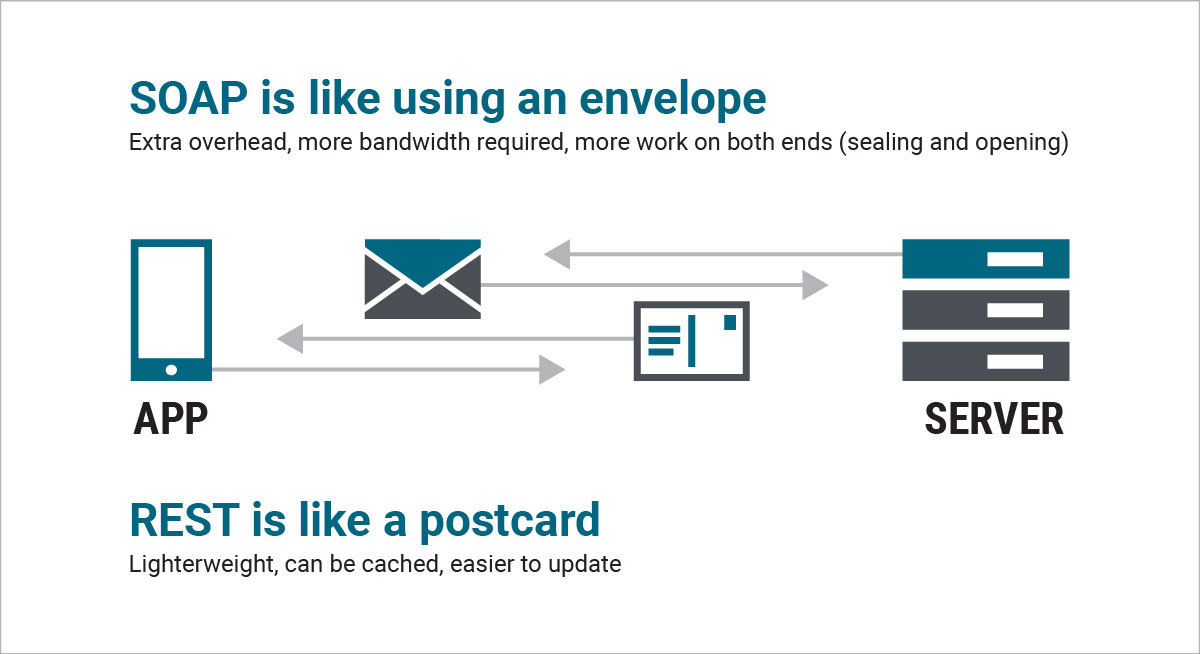Ever wondered how different software applications communicate seamlessly? The secret sauce often lies in REST APIs. In today’s digital age, understanding REST APIs is not just a tech requirement but a business imperative.
In this comprehensive guide, we’ll explore what a REST API is, how they work, and why they’re a game-changer for your business.
What is REST?
REST, or REpresentational State Transfer, is more than just an acronym; it’s the backbone of modern web and mobile applications. Created by Roy Fielding in 2000, REST is an architectural style that standardizes how applications communicate over the Internet.
By using stateless protocols and standard operations, REST simplifies the complexities of these interactions, making your systems more robust and scalable.
The nuts and bolts: how do APIs function?
APIs, or Application Programming Interfaces, are the unsung heroes of our connected world. They act as the middlemen, allowing different software systems to talk to each other.
REST APIs take this a step further by adding a set of constraints and rules, making the communication more efficient and secure. Whether you’re booking a flight, sending an email, or even liking a post on social media, there’s an API working behind the scenes to make it all happen.
How do REST APIs work?
REST APIs function by breaking down a complex operation into smaller, manageable tasks. Each task is a specific API call, handled independently by the server.
For example, when you’re ordering food through an app, multiple REST API calls go out—one to check the menu, another to place the order, and yet another to update your delivery status.
This modular approach makes REST APIs incredibly flexible and well-suited for scalable cloud applications.
What makes an API RESTful?
To be considered RESTful, an API must adhere to six key architectural constraints:
- Uniform interface: This simplifies the architecture by using a consistent set of rules and conventions.
- Client-server architecture: This decouples the client from the server, allowing both to evolve independently.
- Stateless interactions: Each request from the client contains all the information needed to process the request.
- Cacheability: Responses must be explicitly marked as cacheable or non-cacheable to improve performance.
- Layered system: This allows for an architecture composed of hierarchical layers, adding more flexibility and scalability.
- Code on demand (optional): This allows the server to extend the client’s functionality by sending code to be executed.
Real-world examples of REST APIs
Stripe, Google, and Slack—what do they all have in common? They all offer robust REST APIs that developers love.
Stripe’s API, for instance, handles billions of dollars every year, offering features like payment processing, subscription billing, and secure data storage. These APIs are the building blocks that enable businesses to offer rich, seamless experiences to their users.
The many uses of REST APIs
From cloud computing to microservices, REST APIs are everywhere. Their stateless nature makes them ideal for distributed systems where reliability, scalability, and performance are critical.
Whether you’re building a multi-cloud solution or a simple web app, REST APIs offer the flexibility and ease of use you need to succeed in today’s fast-paced digital landscape.
The benefits of using REST APIs
REST APIs offer a plethora of benefits that go beyond just technical advantages:
- Simplified communication: A uniform interface makes it easier for different services to communicate.
- Flexibility: REST APIs can handle multiple types of calls, return different data formats and even change structurally with the correct implementation of hypermedia.
- Scalability: The stateless nature of REST APIs means that it’s easier to add more servers as your user base grows, ensuring that your architecture can scale with your business needs.
REST API vs. API
While all REST APIs are APIs, not all APIs are RESTful. Traditional APIs often rely on complex standards and middleware, whereas REST APIs use standard HTTP methods and a much simpler architecture.
This makes REST APIs easier to implement, easier to scale, and easier to use, providing a more agile and efficient way to build applications.
Why REST APIs are important
In the interconnected world of today, REST APIs serve as the foundation of the digital ecosystem. They enable real-time data sharing and connectivity, driving the growth of web services and Internet of Things (IoT) applications.
Simply put, REST APIs are the linchpin of modern digital transformation strategies.
Before REST APIs: a brief history
Before the advent of REST APIs, the world relied on SOAP (Simple Object Access Protocol) for web services. While SOAP had its merits, it was often seen as overly complex and rigid.
The introduction of REST APIs revolutionized how we think about web services, offering a much-needed alternative that was flexible, lightweight, and easy to use.
REST vs. SOAP
REST and SOAP serve the same purpose but in different ways. While REST uses standard HTTP protocols and is more lightweight, SOAP relies on XML-based messaging and offers built-in security features.

Each has its own set of pros and cons, but REST APIs generally offer more flexibility and are easier to work with, making them the preferred choice for many businesses.
How REST APIs can help your business
REST APIs are not just a developer’s tool; they’re a business enabler. By offering a simplified, standardized way to share data and services, REST APIs can help you break down silos, improve collaboration, and drive business innovation.
As the digital landscape continues to evolve, effective API management becomes increasingly critical, making it essential to understand and leverage REST APIs for your business success.
Whether your enterprise uses SOAP APIs, REST APIs, or more (such as events or GraphQL), Axway’s Amplify Platform can help bring visibility to all your APIs in a multi-cloud, multi-team, and multi-gateway environment.
Reduce API complexity and grow API adoption with an API platform that’s open, secure, and revolutionary.
Ready to take your API strategy to the next level? Discover how Axway’s Amplify Platform can help you manage, secure, and scale your APIs.

Follow us on social